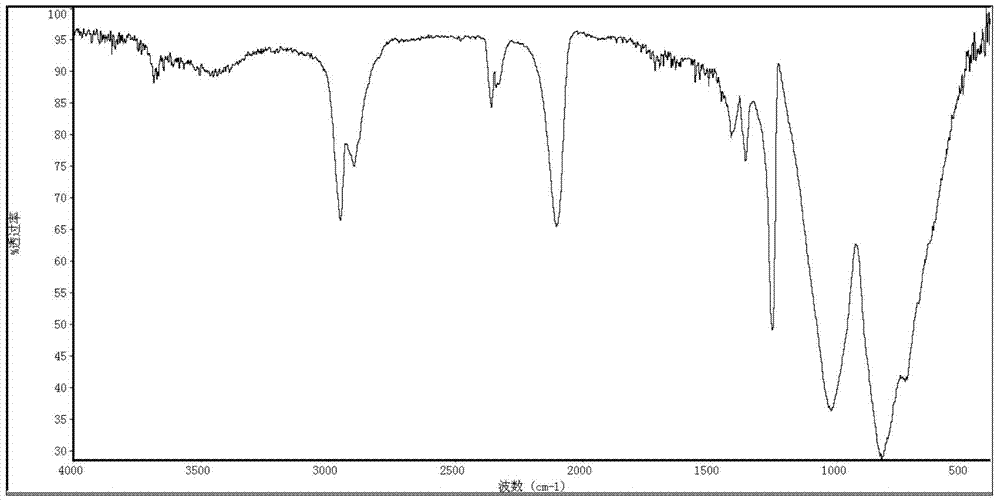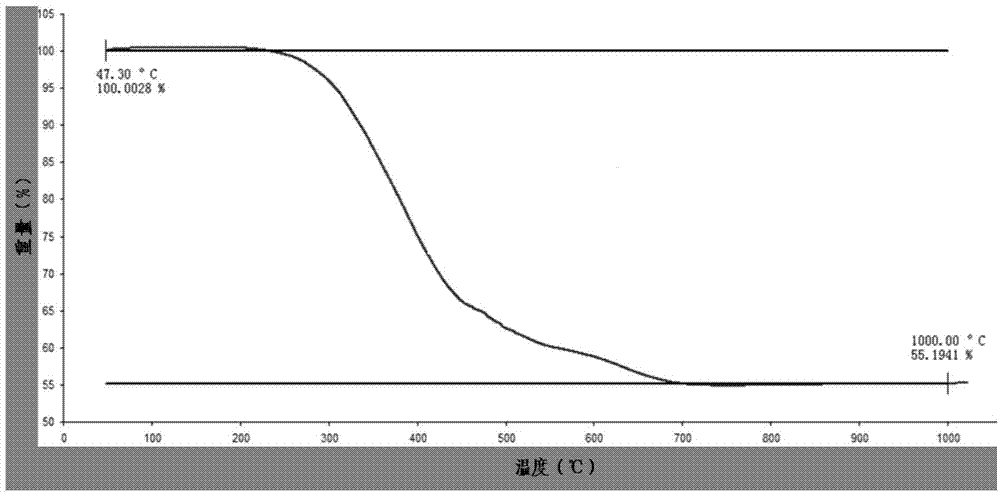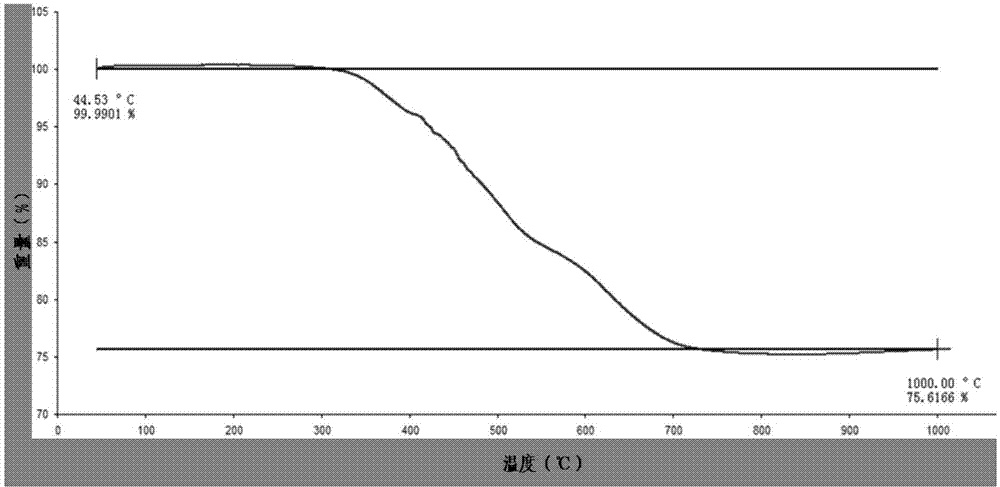Method for synthesizing high-ceramic-yield polycarbosilane
A polycarbosilane and synthesis method technology, applied in the field of organic silicon polymer synthesis, can solve the problems of high manufacturing cost, strong reactivity, harsh use conditions, etc., and achieve easy control of reaction conditions, easy mass production, and easy regulation Effect
- Summary
- Abstract
- Description
- Claims
- Application Information
AI Technical Summary
Problems solved by technology
Method used
Image
Examples
Embodiment 1
[0020] Example 1 After mixing 1000 grams of polycarbosilane with a molecular weight of 500 and 120 grams of 3-bromopropene, place it in a reaction vessel, add 1000 mL of xylene, add 120 grams of n-butyllithium, and heat up to 130°C, and keep it warm for 3 hours. After the reaction was finished, the insoluble matter was removed by filtration, and the solvent was evaporated to obtain 1000 grams of polycarbosilane with a high ceramic yield.
[0021] Its infrared spectrum and thermogravimetric curve are as follows: figure 1 and image 3 as shown, figure 2 It is the thermogravimetric curve of low molecular weight polycarbosilane.
[0022] Depend on figure 1 It can be seen that the precursor structure contains Si-C, Si-CH 3 and other chemical bonds.
[0023] Depend on figure 2 It can be seen that the weight loss of low-molecular-weight polycarbosilane is 45% under the nitrogen condition of 1000°C, and the ceramic yield is 55%.
[0024] Depend on image 3 It can be seen th...
Embodiment 2
[0026] After mixing 1000 grams of polycarbosilane with a molecular weight of 1330 and 60 grams of 3-chloropropene, put it in a reaction vessel, add 1000 mL of xylene, add 60 grams of tert-butyllithium, and raise the temperature to 150 ° C under the protection of high-purity nitrogen. And keep warm for 5 hours. After the reaction was finished, the insolubles were removed by filtration, and the solvent was evaporated to obtain 992 grams of polycarbosilane with a high ceramic yield.
Embodiment 3
[0028] After mixing 1000 grams of polycarbosilane with a molecular weight of 1100 and 76 grams of 3-bromopropene, put it in a reaction vessel, add 1000 mL of xylene, add 76 grams of isobutyllithium, and raise the temperature to 100 ° C under the protection of high-purity nitrogen. And heat preservation reaction 8 hours. After the reaction was finished, the insoluble matter was removed by filtration, and the solvent was evaporated to obtain 1020 grams of polycarbosilane with a high ceramic yield.
PUM
 Login to View More
Login to View More Abstract
Description
Claims
Application Information
 Login to View More
Login to View More - R&D
- Intellectual Property
- Life Sciences
- Materials
- Tech Scout
- Unparalleled Data Quality
- Higher Quality Content
- 60% Fewer Hallucinations
Browse by: Latest US Patents, China's latest patents, Technical Efficacy Thesaurus, Application Domain, Technology Topic, Popular Technical Reports.
© 2025 PatSnap. All rights reserved.Legal|Privacy policy|Modern Slavery Act Transparency Statement|Sitemap|About US| Contact US: help@patsnap.com



